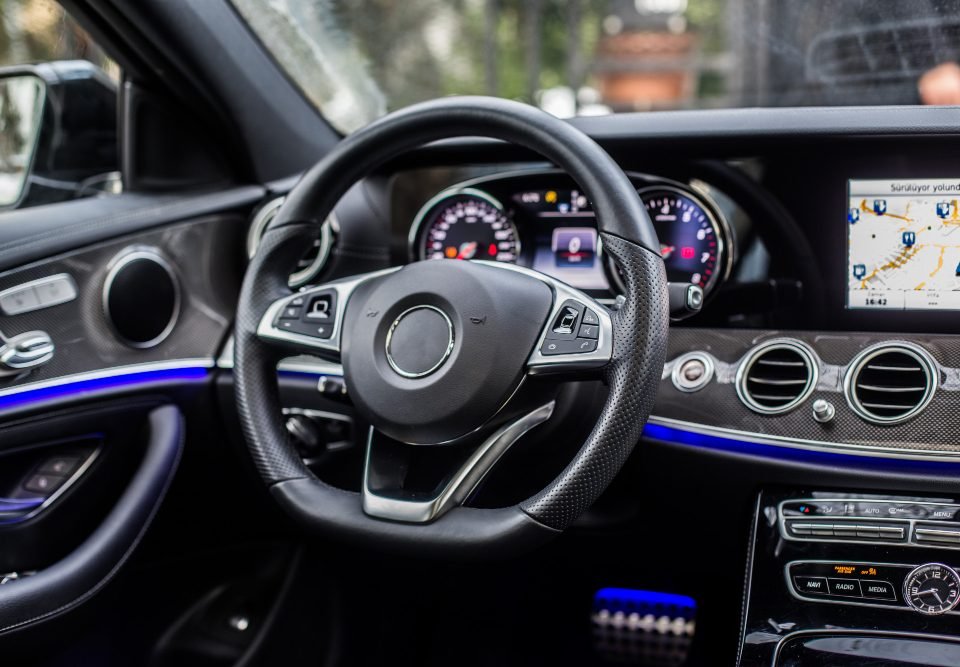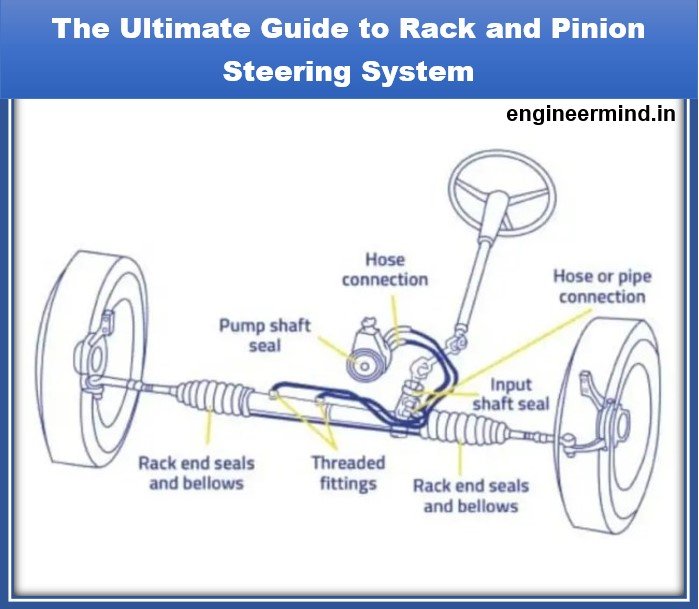When you sit behind the wheel of a car and effortlessly navigate the roads, have you ever wondered how does a steering system works? The car steering system is a crucial component of any vehicle, allowing the driver to control the direction of the vehicle’s movement.

In this article, we will explore the fascinating world of steering systems and how they enable us to control the direction of our vehicles. Whether you’re driving a car, riding a motorcycle, or steering a ship, the steering system plays a crucial role in ensuring your safety and manoeuvrability on the road or in water. We will dive deep into the mechanics of steering systems, discussing different types, components, and their functioning. So, buckle up and let’s discover how a steering system works!
Table of Contents
What is a Steering System?
A steering system is a mechanism that allows a driver to control the direction of a vehicle. It converts the rotational motion of the steering wheel into the linear motion of the front wheels, enabling the driver to navigate and steer the vehicle in the desired direction. Without a functioning steering system, controlling a vehicle would be extremely challenging and dangerous.
Components of a Steering System
To understand how a steering system works, let’s first familiarize ourselves with its key components.
Steering Wheel
The steering wheel is the primary interface between the driver and the steering system. It is typically located in front of the driver’s seat and is connected to the steering column. The driver applies torque to the steering wheel to initiate turning motions.
Steering Column
The steering column is a shaft that connects the steering wheel to the steering gearbox. It provides the necessary structural support and houses various components such as the ignition switch, turn signal lever, and steering lock.
Steering Gearbox
The steering gearbox, also known as the steering gear, is responsible for converting the rotational motion of the steering wheel into the linear motion required to turn the front wheels. It amplifies the driver’s input and transmits it to the steering linkage.
Tie Rods
Tie rods are crucial components that connect the steering gearbox to the front wheels. They transmit the linear motion from the steering gearbox to the steering knuckles, allowing the wheels to turn left or right.
Pitman Arm and Idler Arm
The pitman arm and idler arm are parts of the steering linkage system. The pitman’s arm connects the steering gearbox to the center link, while the idler arm provides support and stability to the opposite end of the center link.
Steering Linkage
The steering linkage consists of various rods and arms that connect the steering gearbox to the front wheels. It includes components such as the center link, drag link, and tie rods, which work together to transmit motion and ensure synchronized steering.
Different Types of Steering Systems
Steering systems can vary depending on the type of vehicle and its specific requirements. Let’s explore some common types of steering systems:
Rack and Pinion Steering
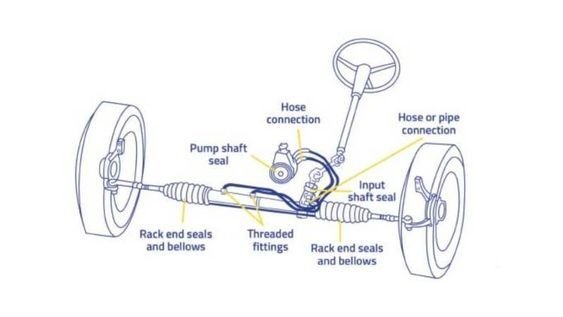
Rack and pinion steering is one of the most widely used steering systems in modern vehicles. It employs a rack (a toothed metal bar) connected to the steering column and a pinion gear attached to the steering shaft. When the driver turns the steering wheel, the rotational motion of the pinion gear moves the rack, causing the front wheels to turn.
Recirculating Ball Steering
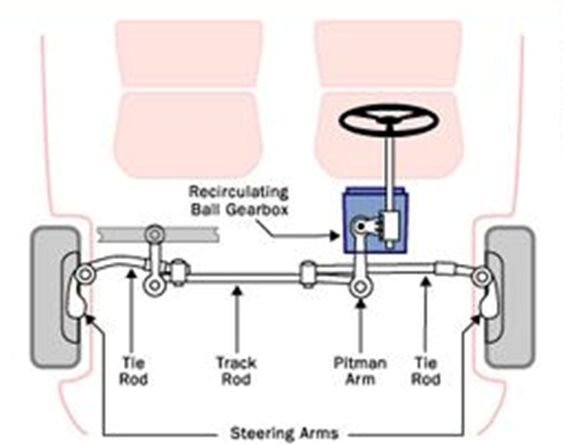
Recirculating ball steering is commonly found in larger vehicles, such as trucks and SUVs. It utilizes a worm gear and a series of recirculating ball bearings to convert the rotational motion of the steering wheel into linear motion. This system provides enhanced durability and is capable of handling heavier loads.
Hydraulic Power Steering
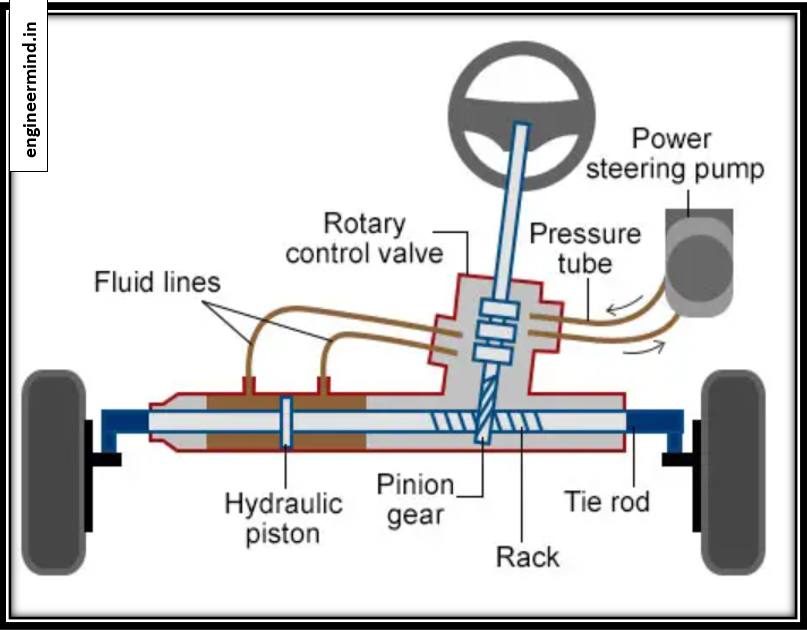
Hydraulic power steering systems assist the driver by using hydraulic pressure to reduce the effort required for steering. They utilize a hydraulic pump, fluid reservoir, and a series of hydraulic hoses and valves. When the driver turns the steering wheel, the hydraulic pump directs pressurized fluid to assist in turning the wheels.
Electric Power Steering

Electric power steering (EPS) systems have gained popularity due to their efficiency and versatility. EPS systems use an electric motor to assist in steering, eliminating the need for hydraulic pumps and hoses. These systems are electronically controlled, allowing for customization and integration with other vehicle systems.
How Does a Steering System Work?
Now that we have a good understanding of the steering system’s components and types, let’s delve into how it actually works when you turn the steering wheel.
Step 1: Driver Input
It all starts with the driver’s input. When you turn the steering wheel, you are applying torque or rotational force. The amount and direction of this force determine the intended direction of the vehicle.
Step 2: Steering Wheel and Column
As you turn the steering wheel, the rotational force is transferred through the steering column. The steering column provides the necessary mechanical connection between the steering wheel and the rest of the steering system.
Step 3: Steering Gearbox
The rotational force from the steering column reaches the steering gearbox. Here, the gearbox amplifies the force and converts the rotational motion into linear motion.
Step 4: Steering Linkage and Tie Rods
The linear motion generated by the steering gearbox is transmitted through the steering linkage. The tie rods play a crucial role in transferring this motion to the steering knuckles, which are connected to the front wheels.
Step 5: Front Wheels
As the linear motion reaches the steering knuckles, the front wheels respond accordingly. The tie rods cause the wheels to turn in the desired direction, allowing the vehicle to change its course.
Throughout this process, the steering system ensures that the front wheels remain synchronized and respond to the driver’s input accurately.
Conclusion
Understanding how a steering system works is essential for any vehicle owner or enthusiast. From the driver’s input to the synchronized motion of the front wheels, each component plays a crucial role in enabling safe and efficient navigation. Whether you’re driving a compact car or steering a large ship, the principles of steering systems remain fundamentally the same. So, the next time you turn the steering wheel, remember the intricate mechanisms at work, allowing you to smoothly control your vehicle’s direction.
FAQs
What is the purpose of a steering system?
The steering system allows the driver to control the direction of a vehicle. It ensures safe navigation, manoeuvrability, and precise handling.
What are the signs of a faulty steering system?
Signs of a faulty steering system include difficulty in turning the steering wheel, unusual noises during steering, vibrations, uneven tire wear, and a feeling of looseness or play in the steering.
Can I drive my vehicle without power steering?
Yes, you can drive a vehicle without power steering, but it will require more effort to turn the wheels, especially at low speeds and when parking.
Are there any advanced steering technologies available?
Yes, there are advanced steering technologies such as adaptive steering systems, which adjust the steering response based on driving conditions, and steer-by-wire systems, which eliminate the mechanical connection between the steering wheel and the wheels.
How can I maintain my steering system?
Regular maintenance, including checking and replacing power steering fluid, inspecting and lubricating steering components, and addressing any signs of wear or damage, is crucial for maintaining a healthy steering system.
Can I upgrade my vehicle’s steering system?
In some cases, it may be possible to upgrade your vehicle’s steering system to a more advanced or specialized system. However, this typically requires professional expertise and may not be feasible for all vehicles.
